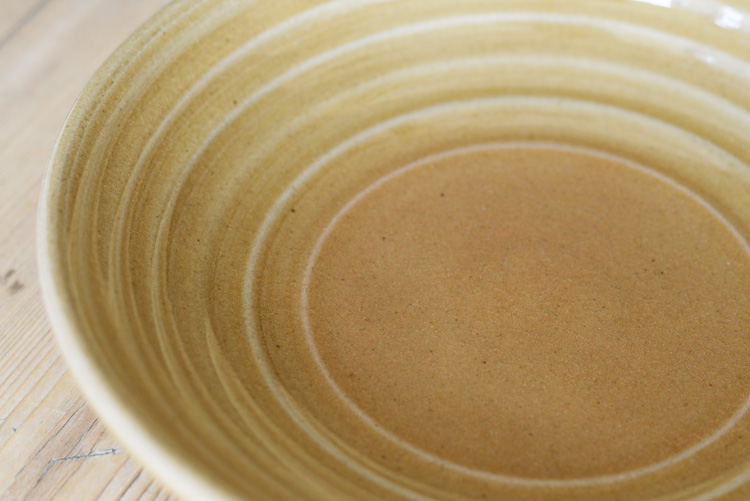当日発送について
以下の条件に該当するご注文を当日配送いたします。
・平日(営業日)の12時までにご注文が完了。
・ご注文いただいた商品の在庫がすべてある場合。
・お支払方法がクレジットカード決済か代引きの場合。
※受注状況や確認事項の有無などにより、お時間をいただく場合がございます。
※12時以降のご注文は最短で発送いたします。
定休日のご案内
土日祝日、お盆、年末年始などは出荷業務をお休みいたします。
Now Loading...
以下の条件に該当するご注文を当日配送いたします。
・平日(営業日)の12時までにご注文が完了。
・ご注文いただいた商品の在庫がすべてある場合。
・お支払方法がクレジットカード決済か代引きの場合。
※受注状況や確認事項の有無などにより、お時間をいただく場合がございます。
※12時以降のご注文は最短で発送いたします。
土日祝日、お盆、年末年始などは出荷業務をお休みいたします。
ゆるやかなカーブにこだわり、カレー皿にもぴったりなフローボール
実際に使ってみると、やっぱりこの程よいカーブがすくいやすい。
内側のラインがあることで、少しひっかかりがあって具材も難なくスプーンにのっかります。
料理を盛りつけた時の見栄えを良くするためにラインの本数と間隔にこだわり、料理が少量でも平たくならない形にデザインしています。
内側に入っているラインは、ろくろを回転させて、職人さんがひとつずつ指の跡をつけて描いたもの。
ラインの間隔や太さはよく見ると少しずつ違って、同じものが一つとしてないのもちょっと特別感を感じて、愛着がわきます 。


一見シンプルで、単色に見えますが、半透明の釉薬なので陶器素材の土もうっすらと透けてみえます。
こういうちょっとしたことで、器から優しい雰囲気や温かみを感じるんだと思います。
温かい色味の展開で色馴染みも良いので、ご家族で色違いでお使いいただくのもお勧めです。
